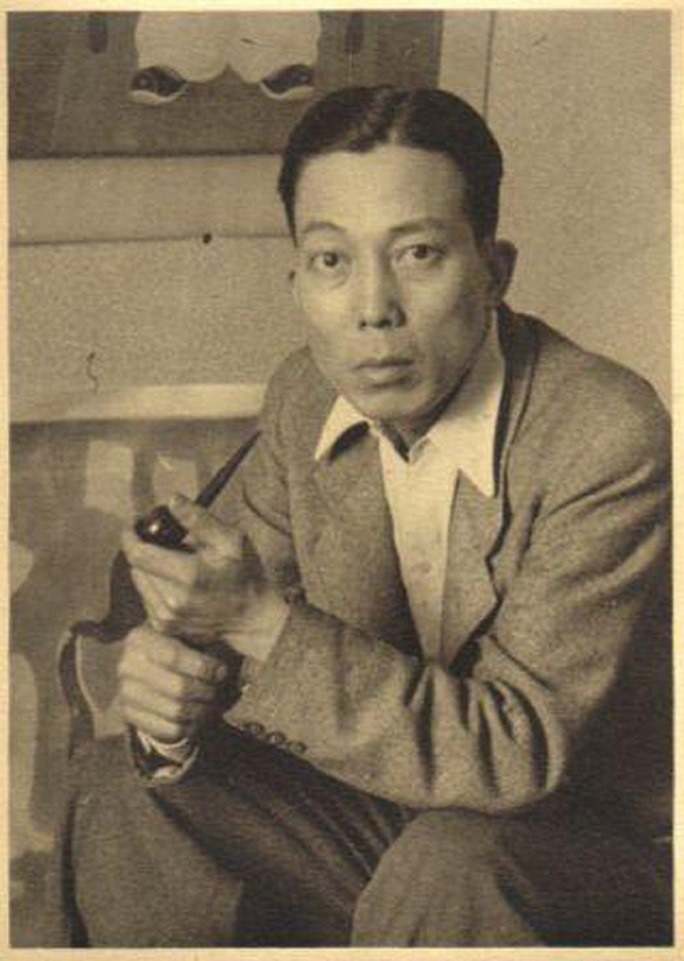Vietnamese paintings are aesthetic, Vietnam is beautiful, and Vietnamese inhabitants are pulchritudinous, but the Vietnamese soul must not be forgotten.
Nowadays, people are all the rage about mass-marketed films, instant Gen Z music, disturbing poetries, and plagiarized literary works. Nevertheless, they forget that Vietnamese painting once had brilliant peaks, especially the talented generation from L’école Supérieure des Beaux-Arts de l’Indochine (now Vietnam University of Fine Arts). I was engrossed all day at the Vietnam National Fine Arts Museum before using space, colors, and charisma, which urged me to write about famous artists and their masterpieces of the beloved nation.
Since times of yore, outstanding quartets have existed among aficionados of Vietnamese paintings, such as the Indochinese Quartet, the Vietnamese Quartet, and the Legendary Quartet (Tứ kiệt Đông Dương, Tứ Trụ Việt Nam, and Bộ Tứ huyền thoại, respectively). I will explain them in detail here, whether right or wrong, but one thing we can recognize is that no one is inferior to others.
The Indochinese Quartet has been renowned as the masters of the most exorbitant magnum opus on the auction market. The group included Mai Trung Thu – Le Pho – Vu Cao Dam – Le Thi Luu. They were also called the Overseas Quartet since they all graduated from the Fine Arts College of Indochina, then settled, and became famous abroad. Their works in the auction market reached a high-price valuation. As a result, they became the pride of the Vietnamese painting community among their peers on the corners of the earth, especially the majestic yet gentle oil-on-canvas “Portrait of Mademoiselle Phuong” (Chân dung Madam Phương) painting (1930) by Mai Trung Thu.
</p>
<p> ” data-medium-file=”https://i0.wp.com/vietnaminsider.vn/wp-content/uploads/2024/03/Mai-Trung-Thu.jpeg?fit=214%2C300&ssl=1″ data-large-file=”https://i0.wp.com/vietnaminsider.vn/wp-content/uploads/2024/03/Mai-Trung-Thu.jpeg?fit=684%2C961&ssl=1″ class=”size-full wp-image-100564″ src=”https://thegbm.com/wp-content/uploads/2024/03/the-fine-arts-college-of-indochina-the-pantheon-of-vietnamese-paintings.jpg” alt width=”684″ height=”961″ srcset=”https://thegbm.com/wp-content/uploads/2024/03/the-fine-arts-college-of-indochina-the-pantheon-of-vietnamese-paintings.jpg 684w, https://i0.wp.com/vietnaminsider.vn/wp-content/uploads/2024/03/Mai-Trung-Thu.jpeg?resize=214%2C300&ssl=1 214w” sizes=”(max-width: 684px) 100vw, 684px” data-recalc-dims=”1″></p>
<p id=) Mai Trung Thứ (1906 – 1980)
Mai Trung Thứ (1906 – 1980)
The portrait illustrates a woman in a classic Vietnamese “ao dai,” hair donned in a sable scarf and high heels with a straightforward painting style. In addition, this artistic portrayal also emphasizes Mai Trung Thu’s deep admiration for the womanly model and a lady rumored to be his inamorata. There may be only one such Phuong in this world, and nothing can ever replicate her, making the portrait the most valuable painting in Vietnam and selling for more than $3 million.
 painting (1930) by Mai Trung Thu</p>
<p> ” data-medium-file=”https://i0.wp.com/vietnaminsider.vn/wp-content/uploads/2024/03/Madam-Phuong.jpeg?fit=175%2C300&ssl=1″ data-large-file=”https://i0.wp.com/vietnaminsider.vn/wp-content/uploads/2024/03/Madam-Phuong.jpeg?fit=596%2C1024&ssl=1″ class=”size-full wp-image-100562″ src=”https://thegbm.com/wp-content/uploads/2024/03/the-fine-arts-college-of-indochina-the-pantheon-of-vietnamese-paintings-1.jpg” alt width=”684″ height=”1175″ srcset=”https://thegbm.com/wp-content/uploads/2024/03/the-fine-arts-college-of-indochina-the-pantheon-of-vietnamese-paintings-5.jpg 684w, https://thegbm.com/wp-content/uploads/2024/03/the-fine-arts-college-of-indochina-the-pantheon-of-vietnamese-paintings-6.jpg 175w, https://i0.wp.com/vietnaminsider.vn/wp-content/uploads/2024/03/Madam-Phuong.jpeg?resize=596%2C1024&ssl=1 596w” sizes=”(max-width: 684px) 100vw, 684px” data-recalc-dims=”1″></p>
<p id=) “Portrait of Mademoiselle Phuong” (Chân dung Madam Phương) painting (1930) by Mai Trung Thu
“Portrait of Mademoiselle Phuong” (Chân dung Madam Phương) painting (1930) by Mai Trung Thu
If the Indochinese Quartet is the first generation to pave the way for the development of the painting community, then the Vietnamese Quartet transformed into ancient trees that shed shade and took root in Vietnamese painting. That quartet included Nguyen Gia Tri, To Ngoc Van, Nguyen Tuong Lan, and Tran Van Can or “first Tri, second Van, third Lan, fourth Can.” They also graduated from the same college as the first graduating class and became famous, but they chose to live, contribute, and fight in their homeland. Their paintings seldom become highly valuated even though they are all masterworks since most have become invaluable National Treasures. One of the Vietnamese Quartet’s works I loved most is “The Woman next to the Lilies” (Thiếu nữ bên hoa huệ) by To Ngoc Van (1943).
</p>
<p> ” data-medium-file=”https://i0.wp.com/vietnaminsider.vn/wp-content/uploads/2024/03/To-Ngoc-Van.jpeg?fit=200%2C300&ssl=1″ data-large-file=”https://i0.wp.com/vietnaminsider.vn/wp-content/uploads/2024/03/To-Ngoc-Van.jpeg?fit=533%2C800&ssl=1″ class=”size-full wp-image-100550″ src=”https://thegbm.com/wp-content/uploads/2024/03/the-fine-arts-college-of-indochina-the-pantheon-of-vietnamese-paintings-2.jpg” alt width=”533″ height=”800″ srcset=”https://thegbm.com/wp-content/uploads/2024/03/the-fine-arts-college-of-indochina-the-pantheon-of-vietnamese-paintings-7.jpg 533w, https://i0.wp.com/vietnaminsider.vn/wp-content/uploads/2024/03/To-Ngoc-Van.jpeg?resize=200%2C300&ssl=1 200w” sizes=”(max-width: 533px) 100vw, 533px” data-recalc-dims=”1″></p>
<p id=) Tô Ngọc Vân (1907 -1954)
Tô Ngọc Vân (1907 -1954)
The “The Woman next to the Lilies” painting depicts the scene of a young woman wearing a traditional white ao dai gracefully tilting her head toward a vase of white lilies. Her appearance, surrounding details, and colors create a simple logarithmic spiral, exuding a lingering, gentle sadness. The lilies placed in the vase next to the girl are not those Vietnamese women often use on full moon days. With a tight, perfect composition and skillful use of color, the painting “The Woman next to the Lilies” shows the woman’s thigh curve’s sensual softness and elaborates on how the artist uses a palette knife to remove the paint layer. The upper part of the painting reveals the pink pigment underneath, creating a rosy color on the cheeks. Besides its artistic values, this oil painting represents an elegant hobby of ancient Hanoian people delighting in white lilies that bloom in late March and early April every year.
By the third generation, Vietnam had another rising art trend — “Phai’s Street, Lien’s Girl.” Although the next generation is still time-honored, they promote their personalities uniquely to create brilliant artistic chef d’oeuvres. We have Nguyen Tu Nghiem, Duong Bich Lien, Nguyen Sang, and Bui Xuan Phai or “Nghiem – Lien – Sang – Phai.” Among the third-generation artists, Bui Xuan Phai’s pure oil painting style in “Ox Cart in the Old Town” (1972) drove my curiosity.
</p>
<p> ” data-medium-file=”https://i0.wp.com/vietnaminsider.vn/wp-content/uploads/2024/03/Xe-bo-trong-pho.jpeg?fit=300%2C208&ssl=1″ data-large-file=”https://i0.wp.com/vietnaminsider.vn/wp-content/uploads/2024/03/Xe-bo-trong-pho.jpeg?fit=500%2C346&ssl=1″ class=”size-full wp-image-100566″ src=”https://thegbm.com/wp-content/uploads/2024/03/the-fine-arts-college-of-indochina-the-pantheon-of-vietnamese-paintings-3.jpg” alt width=”500″ height=”346″ srcset=”https://thegbm.com/wp-content/uploads/2024/03/the-fine-arts-college-of-indochina-the-pantheon-of-vietnamese-paintings-8.jpg 500w, https://i0.wp.com/vietnaminsider.vn/wp-content/uploads/2024/03/Xe-bo-trong-pho.jpeg?resize=300%2C208&ssl=1 300w” sizes=”(max-width: 500px) 100vw, 500px” data-recalc-dims=”1″></p>
<p id=) “Ox Cart in the Old Town” (1972)
“Ox Cart in the Old Town” (1972)
Bui Xuan Phai’s street paintings are both ancient and very realistic, clearly expressing the soul of Hanoi’s Old Town in the 50s, 60s, and 70s. The color patches in his paintings often have bold borders. The streets not only “become into” themselves but are also closer to humans. Whether one changes their point of view, one can always see the depths of the painting on the surface. Looking at Phai’s old town paintings, I found that he has conveyed memories, nostalgia, sadness, and wistful regret in each drawing as a harbinger of change and disappearance of each roof, each person with an old soul.
</p>
<p> ” data-medium-file=”https://i0.wp.com/vietnaminsider.vn/wp-content/uploads/2024/03/Bui-Xuan-Phai.jpeg?fit=300%2C193&ssl=1″ data-large-file=”https://i0.wp.com/vietnaminsider.vn/wp-content/uploads/2024/03/Bui-Xuan-Phai.jpeg?fit=600%2C385&ssl=1″ class=”size-full wp-image-100568″ src=”https://thegbm.com/wp-content/uploads/2024/03/the-fine-arts-college-of-indochina-the-pantheon-of-vietnamese-paintings-4.jpg” alt width=”600″ height=”385″ srcset=”https://thegbm.com/wp-content/uploads/2024/03/the-fine-arts-college-of-indochina-the-pantheon-of-vietnamese-paintings-9.jpg 600w, https://i0.wp.com/vietnaminsider.vn/wp-content/uploads/2024/03/Bui-Xuan-Phai.jpeg?resize=300%2C193&ssl=1 300w” sizes=”(max-width: 600px) 100vw, 600px” data-recalc-dims=”1″></p>
<p id=) Bùi Xuân Phái (1920 – 1988)
Bùi Xuân Phái (1920 – 1988)
On the bigger picture of the historical development of Vietnamese painting, only three quartets, the Indochinese Quartet, the Vietnamese Quartet, and the Legendary Quartet, stood out. These celebrities are talented technical players and symbols of creative power and courageous spirit in art.
Suppose we were to discuss the model for a painting. In that case, young people should not rush to the conclusion that they have the namesake as the person in the painting because the soul of a masterpiece must also come from a sophisticated and refined human being. Furthermore, the painting also captures the “ultimate” spirit of a person’s mortal coil. A case in point, one’s name is Thuy. Still, it was “em Thuy” (1943) who, at 24 years old, could forever fantasize about the dreamy and childish eyes and magical temperament of an 8-year-old girl, so we admire it sincerely, the golden moment of a lifetime.
It was unnatural for people of olden times to convert raw materials to high-grade paper like dó (poonah) and điệp for paintings and second-grade paper for votive papers sans reasonable purpose. Looking at the background in Dong Ho village, where only two painting houses were left, surrounded by duplicate votive goods, I felt the need to revive people’s love for the art of old and new.
To conclude, I have only one message to convey: Vietnamese paintings are aesthetic, Vietnam is beautiful, and Vietnamese inhabitants are pulchritudinous, but the Vietnamese soul must not be forgotten.
Related
Source: Vietnam Insider

